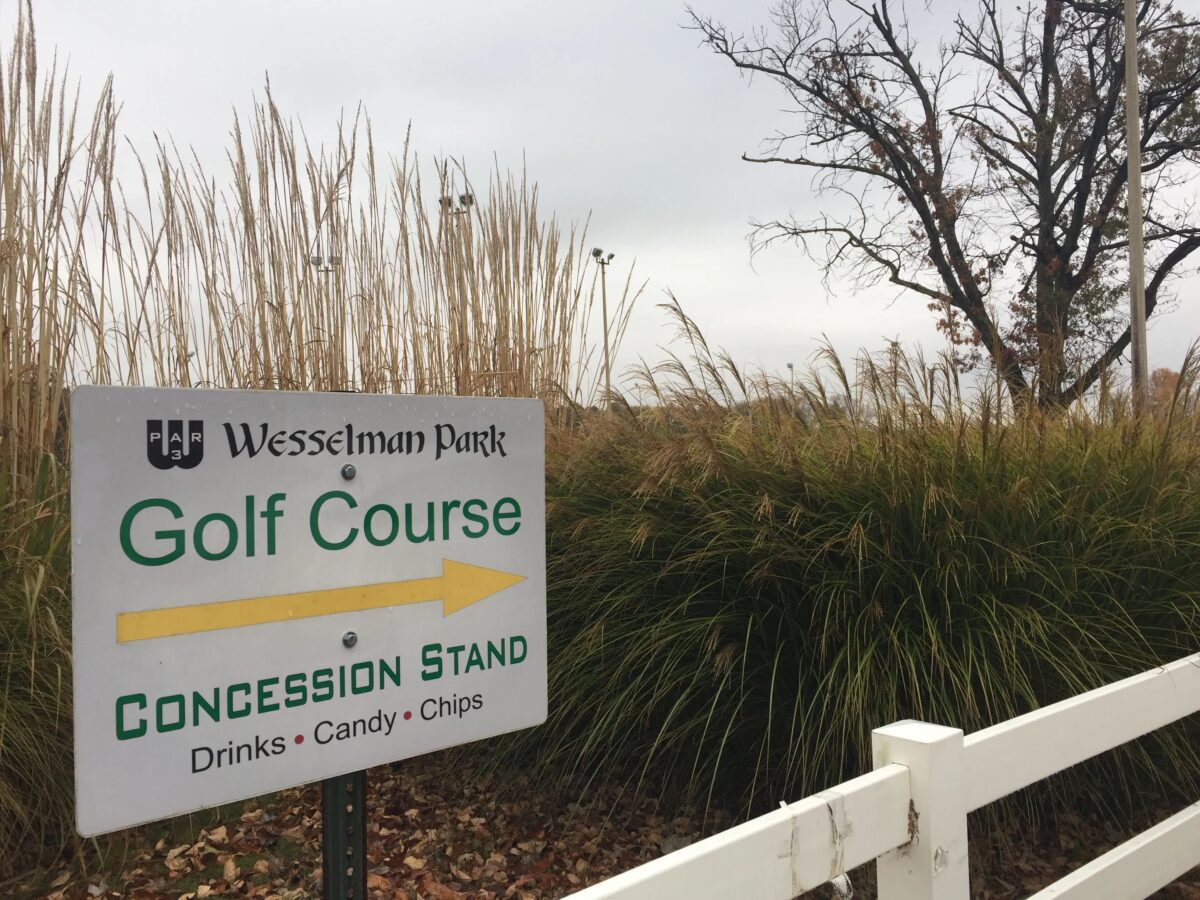EVANSVILLE, Indiana — How’s this for obscure local history? Somewhere under the land that once housed a small Evansville golf course lies a pioneer cemetery.
A local historical group is hoping to figure out exactly where people are buried around the back corner of the former Wesselman Park Par-3 course. McCallister Cemetery is on a shady knoll close to Wesselman Woods Nature Preserve.
The tombstones from the cemetery have been missing since the 1960s. However, the cemetery has survived through the years even as more and more pieces of the surrounding land were carved off for developments.
Once marked off with a split-rail fence, only a historical marker added in 1990 by the Capt. Henry Vanderburgh Chapter of the Daughters of the American Revolution indicates what is there now.
However, a representative of the group told the Evansville Board of Park Commissioners that it wants to undertake work that could ultimately lead to getting McCallister Cemetery onto the National Register of Historic Places.
“After the 2019 closing of the Wesselman par-3 golf course, there has been a concern for the future and safety of the cemetery,” Cheri Baumberger said to the board.
Prior to the closure, officials insisted the city’s golf fund had run a negative balance for several years. It dropped 11 percent in 2018. A consultant hired by the city found that Evansville’s supply of golf facilities outweighed demand.
Then-Board President Jerome Stewart said golf in Evansville would “not suffer” and “will still thrive” with the closure of Wesselman Par 3. He noted another public course, McDonald, is less than a mile away.
In total, Stewart noted at the time, there are 12 golf courses in the city, including four public ones. An additional seven are within 20 miles.
“It has been concluded that probably the closure of at least one golf course will make it better for the rest of the courses in the surrounding areas and within our community,” Stewart said.
A consultant said future uses of the land could include a modern golf academy, donating the land to Wesselman Nature Preserve or creating a passive park — one with an emphasis on leisure and natural habitats and not as much playgrounds and pools.
A petition urging that Wesselman Par 3 stay open had 75 signatures. An organizer of the petition drive, Randy Calvert, was a regular player there.
Although the Evansville area has many courses, Calvert said Wesselman was unique in the group because it is tailored to the needs of younger golfers, and it was also an environment where more experienced players can practice putting.
Recently, Baumberger told park commissioners there may be up to 35 graves there. Commissioners gave the group permission to pursue work locating the graves.
Baumberger said the work will be unobtrusive and that the locations will be recorded by their GPS coordinates.
“Our renewed interest in the McCallister family cemetery is to further our society’s goals of patriotism, education and historic preservation,” she said.
Several different methods will be used but it is still uncertain when the work will take place, Baumberger said
Among them will be a Daviess County (Kentucky) search-and-rescue dog trained in locating cadavers. She said the dog has successfully helped locate other historic grave sites, including Civil War veterans in Parker Cemetery on Evansville’s West Side.
A University of Southern Indiana anthropology assistant professor also has offered to help using ground-penetrating radar equipment, she said.
“We’re very excited to get approval from the Parks Board and proceed with this project,” Baumberger said.
She said the local chapter has been working on the project since October 2020.
“We just want to preserve that acre of land the McCallisters set aside in perpetuity as a final resting ground for their family and it won’t be erased, forgotten or disrespected for years to come,” she said.
The McCallister family was among the Evansville area’s earliest pioneer settlers.
Eneas McCallister, a veteran of the Revolutionary War, moved to the area from Pennsylvania and began operating a ferry across the Ohio River in 1805, according to information prepared by the DAR for the historical marker’s dedication.
Mark Wilson covers education and environment at the Courier & Press. Contact him at mark.wilson@courierpress.com. John T. Martin contributed to the reporting.
[listicle id=778272799]
[mm-video type=playlist id=01es6rjnsp3c84zkm6 player_id=none image=https://golfweek.usatoday.com/wp-content/plugins/mm-video/images/playlist-icon.png]
